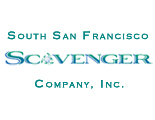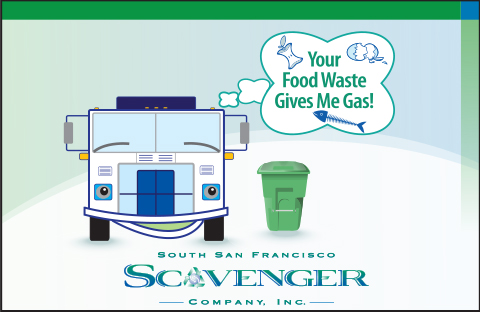South San Francisco, CA February 17, 2017 Submitted by SSF Scavenger Company
Compost Quiz
What is Anaerobic Digestion?
According to Wikipedia, anaerobic digestion (AD) is a “collection of processes by which microorganisms break down biodegradable material in the absence of oxygen.” It happens in your stomach, and it happens at the Biogenic CNG Facility at Blue Line Transfer.
South San Francisco Scavenger Company collects food scraps, food-soiled paper and yard trimmings from your green cart, hauls it to Blue Line Transfer, and loads it into one of 8 digesters. Once inside, bacteria similar to what you would find in a cow’s stomach is sprayed on the material. Over a period of about 3 weeks, the bacteria digest the food waste.
During the digestion process, biogas is created and used to fuel one of South San Francisco Scavenger’s CNG-powered collection vehicles. Once digestion is complete, the remaining organic material is hauled to another facility where the composting process is completed.
Can we use plastic bags to contain our food scraps?
No. Plastic prevents bacteria from doing its job and it contaminates compost. Compostable or “bio” bags aren’t much better. If you want to line your kitchen pail, use newspaper, paper towels, a brown paper bag, or waxed paper. Or, consider using a paper milk or ice cream carton instead of your pail. When full of food scraps, you can dump the whole carton into your green cart.
Where can I find more information about composting?
Visit www.ssfscavenger.com. You will find more information about our AD Facility and about home composting.